Duck, dip dive! Adorable fluffy chicks take a giant leap of faith to be in the water with their mother for the first time since hatching
This is when the cute, fluffy chicks jump into the water to swim with their mother for the first time since hatching.
With hood Young saw-breasted ducks dive into the water within 24 hours of hatching, but only if their mother deems it safe.
Steve Furcich, who captured the beautiful scene in More of Bavaria, Minnesota remembers the mother duck “calling out to them” as the ducklings began to jump out of their nest.
Young mergansers, who dive to catch small fish to survive, jump more than 15 meters from the nest to be with their mother. In some cases, they even walk more than a kilometer to the nearest water.
It’s unclear how far the ducks Furcich observed traveled or how deep their jumps were, but the 66-year-old said the sight “continues to amaze me.”
A group of young mergansers swim with their mother after diving from the nest in Lake Bavaria, Minnesota
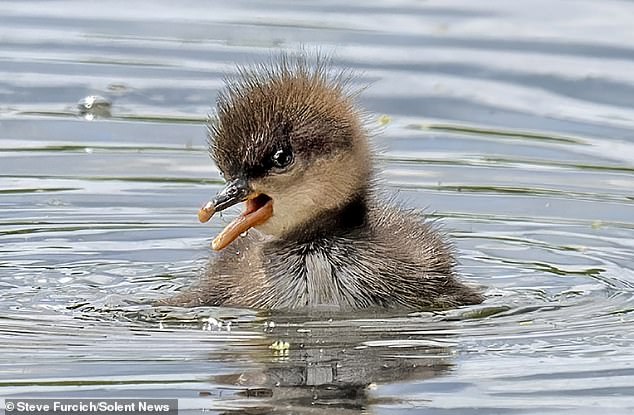
A young sawbill is seen on its first swim, which occurs 24 hours after hatching
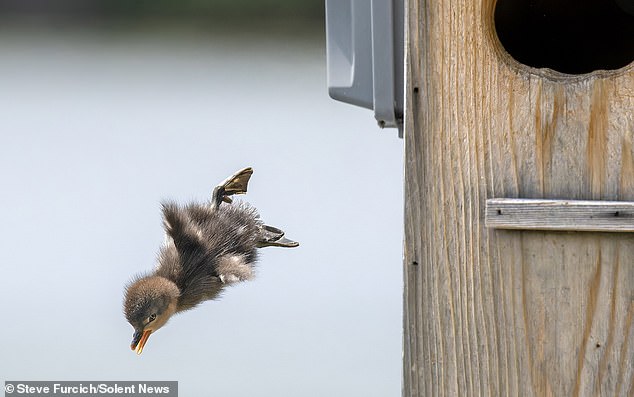
A duckling dives from its nest in Lake Bavaria, Minnesota
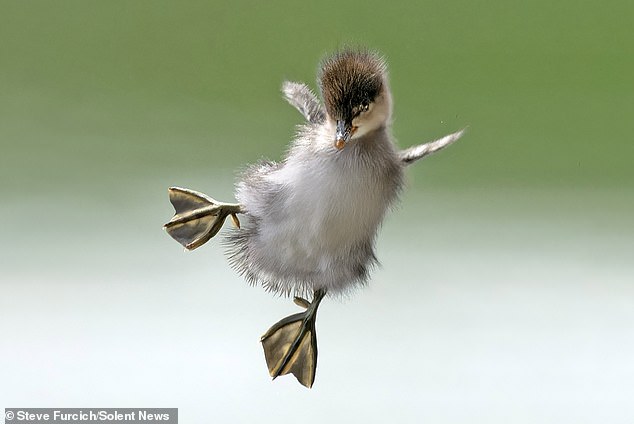
A young sawbill soars through the air after diving from the nest
“The chicks all hatch within 24 hours and all jump out of the nest 24 hours later, but not before the mother is outside the nest calling to them,” Furcich said.
‘It continues to amaze me how all of this happens on time and according to plan.’
“These ducks have muscles that allow them to change the shape of their eyeballs so they can see perfectly underwater,” the photographer added.
‘Birds are more difficult to photograph because their movements can be faster and less predictable.
‘A good photographer is like a football player. They anticipate where the ball is going to go instead of reacting to it and chasing it.’
The mergansers are found throughout the eastern half of the U.S., with the species’ main breeding range being near the Great Lakes, according to the Minnesota Breeding Bird Atlas.
There is also a separate population of the Goosander in the Pacific Northwest.
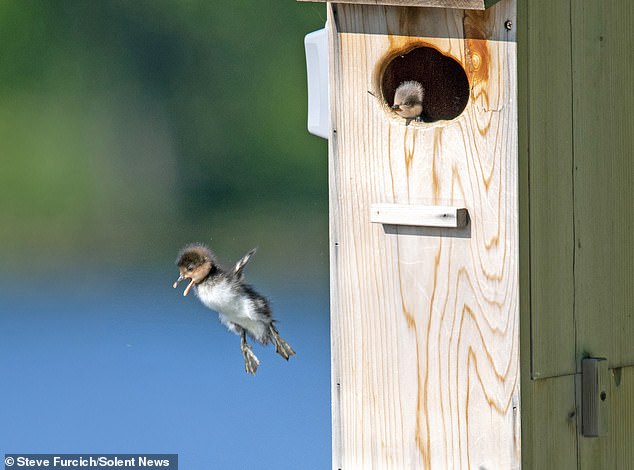
Young mergansers, which dive for small fish to survive, jump more than 15 meters from the nest to be with their mother
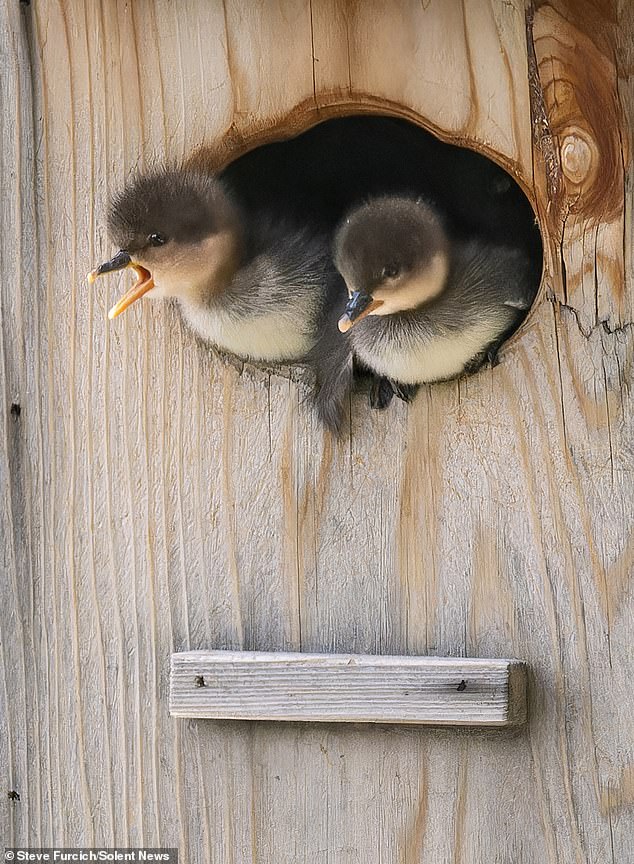
A mother duck calls her young, causing the fluffy ducklings to run to the entrance of the nest
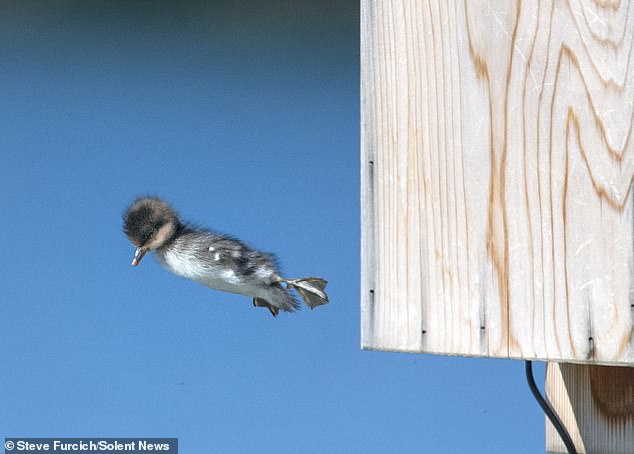
Ducks dive from a birdhouse into the water of Lake Bavaria
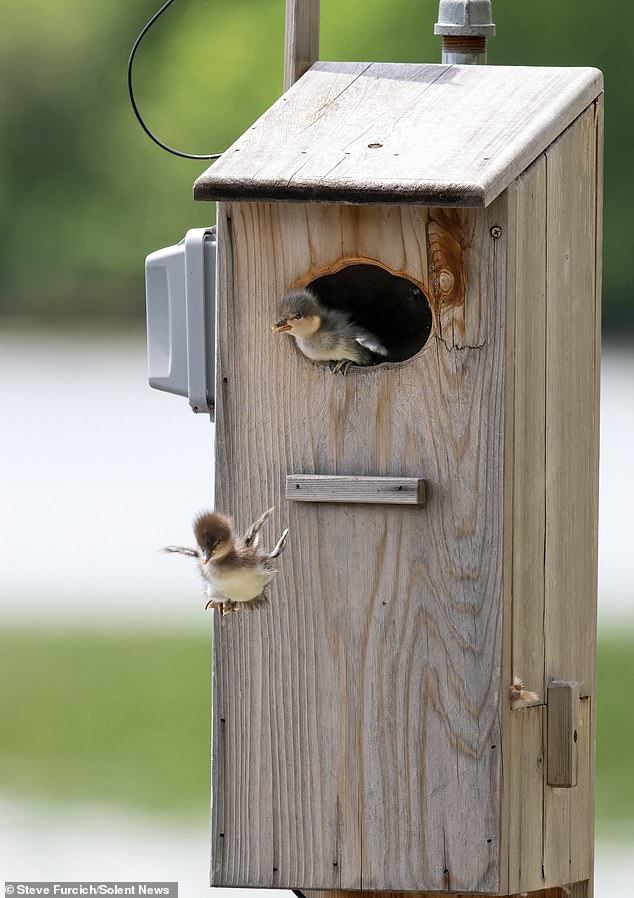
Ducklings leave the nest within 24 hours of hatching, after their mother has checked the area for possible threats.
Female mergansers often lay their eggs in the nests of other ducks. All about birds reported.
A clutch consists of about 13 eggs, but nests with as many as 44 eggs have also been found.
Ducklings leave the nest within 24 hours of hatching, after their mother has checked the area for possible dangers.
She will then call her young, causing the fluffy chicks to run to the entrance of the nests, where they will flutter to the ground to swim with her.
The oldest recorded crested merganser was a male and lived to be at least 14 years and six months old.
He was originally banded in Minnesota in 1995 and shot dead in Mississippi in 2009, the outlet reported.
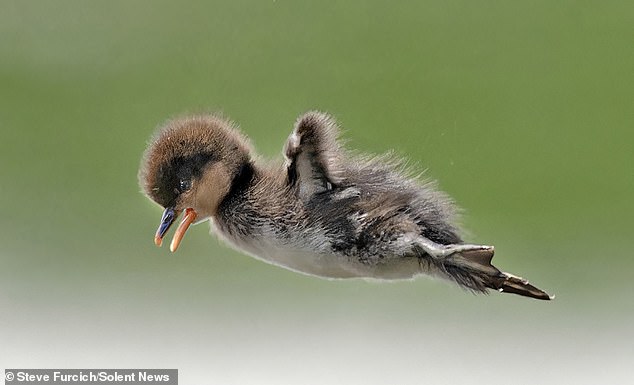
Photographer Steve Furcich captured this duckling in flight as it dove into the water for the first time toward its mother
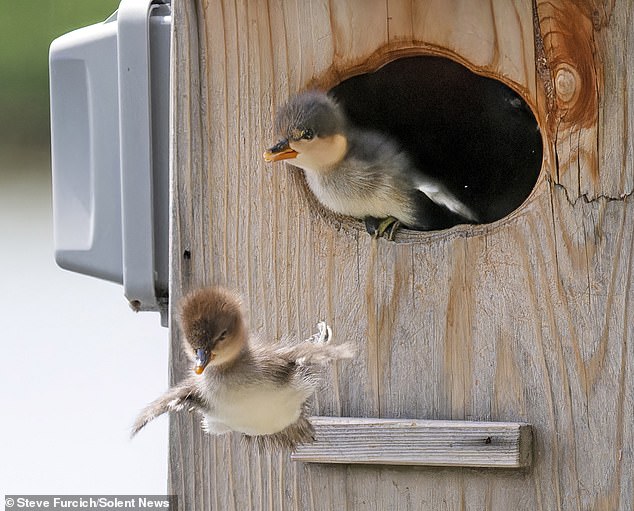
Two ducklings jump from their nest at Lake Bavaria in Minnesota
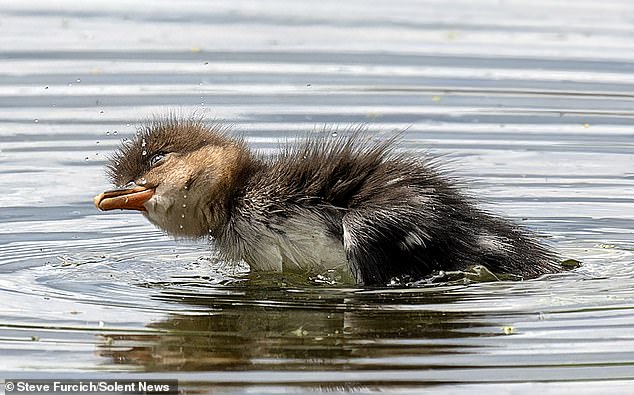
The photo shows a young merganser during its first swim at Lake Bavaria in Minnesota.
